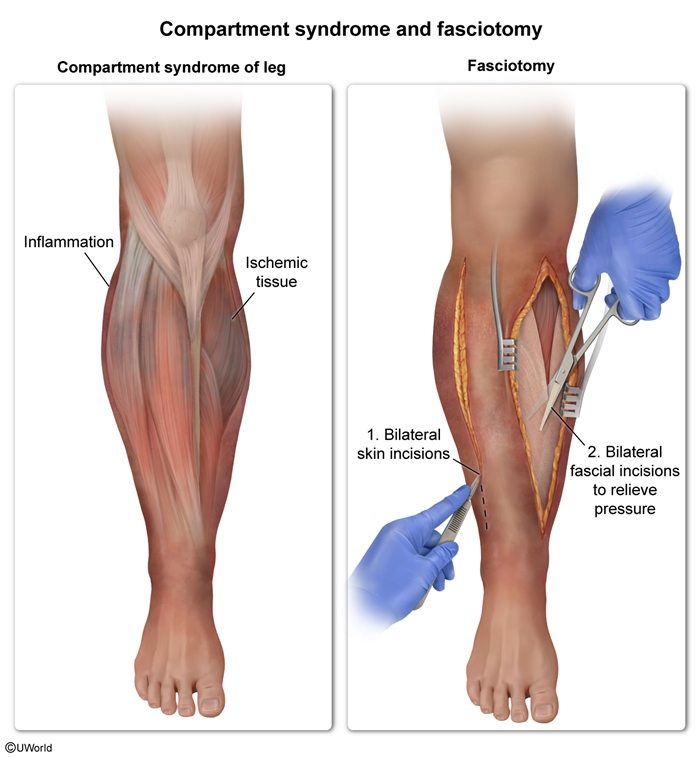Compartment Syndrome
Article Sections
Introduction
Acute compartment syndrome is an emergency condition characterized by increased pressure within a closed anatomical compartment, leading to compromised tissue perfusion and potential tissue damage. It is a surgical emergency most commonly affecting the extremities. If compartment syndrome is not rapidly recognized and managed with fasciotomy, loss of limb can occur.
Risk factors
Compartment syndrome most commonly occurs following trauma:
- Fractures (~75% of cases, long bone fractures highest risk)
- Crush injuries
- Burns (especially circumferential burns)
- Vascular injury (due to ischemia-induced swelling)
- Blunt trauma
It can also occur due to nontraumatic causes such as prolonged limb immobilization or compression, intense physical exertion (particularly in untrained individuals), or reperfusion of an acutely ischemic limb (ie, ischemia-reperfusion injury).
Pathophysiology
Many muscle compartments are enclosed by inflexible fascia. Compartment syndrome occurs when swelling (eg, due to trauma) or increased volume (eg, hematoma) in a compartment results in increased intracompartmental pressure that exceeds perfusion pressure, which can restrict capillary perfusion and cause tissue ischemia and cellular hypoxia. This ischemic insult triggers a cascade of inflammatory responses, further exacerbating tissue damage and swelling, thereby perpetuating the cycle of increased compartment pressures. The threshold for tissue damage typically occurs when compartmental pressures are within 10-30 mm Hg of diastolic pressure.
Continue Learning with UWorld
Get the full Compartment Syndrome article plus rich visuals, real-world cases, and in-depth insights from medical experts, all available through the UWorld Medical Library.
Figures

